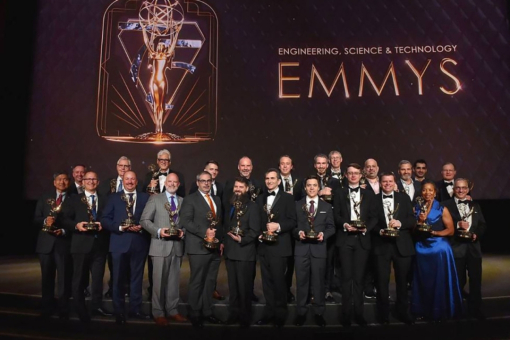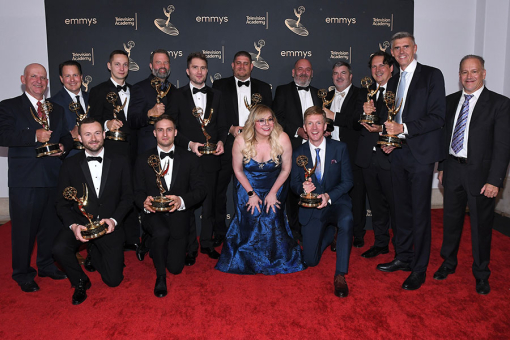The Television Academy has announced the recipients of the 67th Emmy Engineering Awards. The awards will be presented Wednesday evening, October 28, at Loews Hollywood Hotel. Silicon Valley star Josh Brener will serve as the host for the awards ceremony.
The honorees include:
The Philo T. Farnsworth Award, honoring an agency, company or institution whose contributions over time have significantly impacted television technology and engineering will be awarded to Grass Valley USA, LLC.
Grass Valley USA, LLC will be honored for its five-decade history of providing the tools to create signal infrastructure as the television industry grew; for its years of leadership in video routing, switching and manipulation; and for its industry-changing, pioneering strides in digital-image processing and effects.
The Charles F. Jenkins Lifetime Achievement Award, honoring a living individual whose ongoing contributions have significantly affected the state of television technology and engineering will be given to Garrett Brown.
Brown, inventor of the Steadicam, the Skycam, DiveCam and MobyCam, has enjoyed a career that consistently raised the standard for camera movement. His continuous invention of camera-stabilization products and techniques has changed the visual language of filmed storytelling.
Three Engineering Emmys will be presented to an individual, company or organization for engineering developments that significantly improve existing methods, or innovations that materially affect the transmission, recording or reception of television.
This year’s three Engineering Emmy recipients are:
Mark Franken for EdiCue. EdiCue has established software that incorporates groundbreaking workflow, which sound supervisors use to reliably create and update ADR cues within Pro Tools. This workflow simplifies the process of re-syncing cues when last-minute picture changes occur, and it uniquely provides visual methods to confirm that the timing of cues is correct. These features, along with the flexibility of EdiCue in interfacing with other tools and cueing systems found on ADR stages around the world, have led to its almost universal adoption by both independent television sound supervisors and major post production studios.
Michael Sechrest, Chris King, and Greg Croft for SpeedTree. SpeedTree software has greatly advanced an artist’s ability to generate specifically designed trees and vegetation with a unique procedural process and an intuitive interface that allows for manipulation of every design attribute.
Zhou Wang, Alan Bovik, Hamid Sheikh and Eero Simoncelli for Structural Similarity (SSIM) Video Quality Measurement Model. Structural Similarity (SSIM) is an algorithm for estimating the perceived quality of an image or video. Its computational simplicity and ability to accurately predict human assessment of visual quality has made it a standard tool in broadcast and post-production houses throughout the television industry. SSIM uses powerful neuroscience-based models of the human visual system to achieve breakthrough quality prediction performance. Unlike previous complex error models that required special hardware, it can be easily applied in real time on common processor software. SSIM is now the most widely-used perceptual video quality measure, used to test and refine video quality throughout the global cable and satellite TV industry. It directly affects the viewing experiences of tens of millions of viewers daily.











